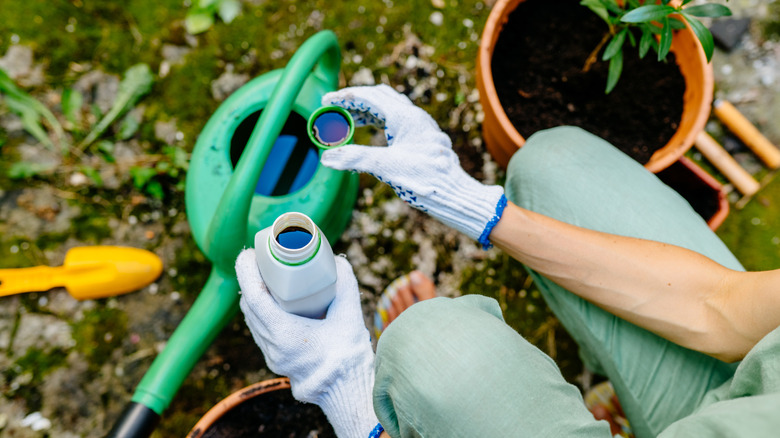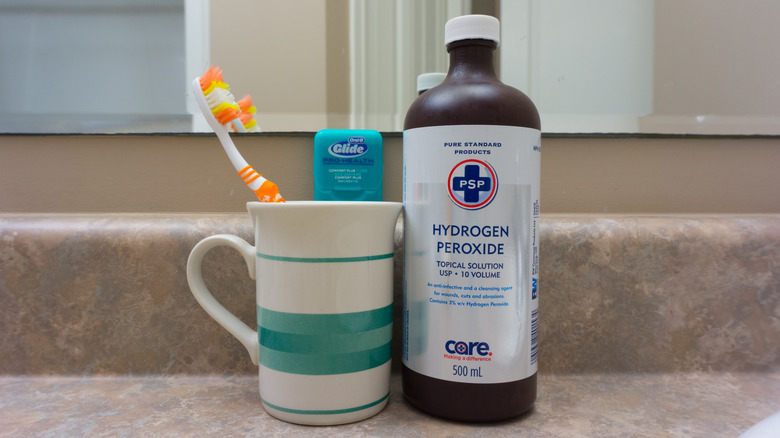How To Sterilize Soil With Hydrogen Peroxide (And Why You Should)
The key to keeping a plant happy is to give it the right amount of water and light. But another secret to a healthy, thriving plant is to care for what's below the surface, too. Sterilizing potting soil gets rid of hidden fungi, insects, and other bacteria that could be harmful for your houseplants. If you're wondering when you should sterilize your potting soil, remember that indoor plants need sterile soil, while outdoor plants don't. Even if your bag of potting soil is new, the package could have been sitting outside in the rain at the garden center, harboring pests and disease in a moist environment.
An easy way to sterilize your potting soil requires hydrogen peroxide, known for being a disinfectant. Combine equal amounts of water and 3% hydrogen peroxide and pour this into potting soil that is in a container with drainage holes. Make sure the mixture is fully blended into the soil, reaching any and all hidden pests. Once this is done, give the soil a few days to dry completely. To be extra cautious, cover the soil during this time so new pests don't move in. Use the potting soil only after it's dry. If you are working with a large amount of soil, you can also spread a thin layer of soil over a plastic sheet and apply the water-hydrogen peroxide mixture using a spray bottle. Make sure the soil is sprayed evenly, being careful to mist — but not soak — the dirt.
Is hydrogen peroxide safe for plants and people?
If hydrogen peroxide gets rid of pests and bacteria in soil, will it also hurt your plants? This common household product was approved by the U.S. Environmental Protection Agency in 1998 as a pest-control treatment on indoor and outdoor plants — including "application as a spray on foliage, a dip on cuttings and roots, a pre-planting soil treatment." Bottom line: Your plants will be fine. In fact, hydrogen peroxide can be applied to the base of plants, sprayed on foliage, or even create a cleaner environment for them, as we've seen in the essential role that hydrogen peroxide plays in hydroponic gardening. The key, however, is dilution. Here's what you should know about hydrogen peroxide and plants: Generally, a safe ratio for plants is 1 cup hydrogen peroxide to 32 cups of water, although different purposes may require different concentrations.
Also, keep your own safety in mind when working with hydrogen peroxide. Although it is used to disinfect cuts and burns and can even be diluted as a mouth rinse, hydrogen peroxide still needs to be used with caution. Use rubber gloves when working with the chemical, especially if you're mixing it into the soil with your hands. Work in a well-ventilated area, since topical contact or exposure to fumes can be irritating or harmful, especially for children.

